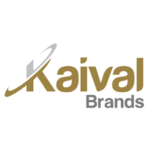Banking on Bank Stocks the Micro-Cap Way
 Can you believe that in the past four months, Wells Fargo (NYSE: WFC) is up over 22%? Or that Citigroup (NYSE: C) is up close to 20% and J.P. Morgan Chase (NYSE: JPM) is approaching a 25% gain YTD? The real stunner might be Bank of America (NYSE: BAC), which is up more than 48% over the same time.
Can you believe that in the past four months, Wells Fargo (NYSE: WFC) is up over 22%? Or that Citigroup (NYSE: C) is up close to 20% and J.P. Morgan Chase (NYSE: JPM) is approaching a 25% gain YTD? The real stunner might be Bank of America (NYSE: BAC), which is up more than 48% over the same time.
Those aren’t surprising gains just because the financial services sector spent so much time over the past few years ensconced in heavy controversy. These big moves are also surprising because unless it’s Apple (Nasdaq: AAPL) we’re talking about, companies with 11 and 12-figure market caps just don’t make these kinds of moves in condensed periods of time. Big bank stocks in particular do not have reputations for being growth stocks.
Micro-cap banks…leading the way!
Does that mean the best moves of 2012 are over for bank stocks? They might be for the mega-cap banks, but there are plenty of micro-cap banks offering compelling prospects and good dividends, too.
Medallion Financial (Nasdaq: TAXI):
Medallion Financial is one of the more well-known stocks in the micro-cap universe if for no other reason than that the company has been around for almost two decades and because engages in originating, acquiring, and servicing loans that finance taxicab medallions. Basically, if you want be a cab driver in New York and need a loan to purchase the medallion, Medallion Financial helps you with that, so this isn’t your run-of-the-mill financial services company.
This may not be the type of company investors usually think of as being a strong dividend payer, but the reality is Medallion Financial has increased its dividend by a third since late 2010 and the payout has quadrupled since 2003. Medallion now yields north of 7%.
CapLease Inc. (NYSE: LSE):
CapLease is a real estate investment trust (REIT), so it’s not surprising this company has a juicy 6.3% yield. By law, REITs are required to distribute at least 90% of their taxable income each year to shareholders as dividends. The company did cut its payout during the financial crisis, but it has increased the dividend in the past year.
Roughly 95% of CapLease’s assets are owned single-tenant properties and while the company operates in just 24 states, the company does count the U.S. government, TJMax (NYSE: TJX) and Tiffany (NYSE: TIF) among its tenants.
Last year, CapLease sold $240 Million of debt investments and reduced its debt portfolio 74%. Portfolio leverage was reduced to 66%.
Artio Global Investors (NYSE: ART):
The chart for Artio Global Investors does not look particularly attractive at the moment…we’ll address that in more detail in just a minute. The New York-based company provides portfolio management and fund management services to clients and has been in business for almost five decades.
In addition to New York, Artio Global has offices in Los Angeles, Toronto, London and Sydney. The company finished March with $26.6 billion in assets under management…down $24.7 billion, or 48%, from $51.3 billion as of March 31, 2011, due to net client cash outflows and market depreciation.
“Net client cash outflows for the first quarter of 2012 were $6.0 billion, driven primarily by net client cash outflows from our International Equity I and II strategies, partly offset by net client cash inflows to our High Yield and High Grade Fixed Income strategies” according to Richard Pell, Chairman, Chief Executive Officer and Chief Investment Officer.
“Elsewhere, amid the first quarter’s more ‘risk-on’ environment, our High Yield strategy generated healthy net inflows. And our Multi-, Small- and Microcap US Equity strategies produced exceptional performance, enhancing their potential to become more meaningful contributors to our business over time” said Mr. Pell.
Artio started paying its dividend in 2010 and currently yields 5.1%, but the company’s payout ratio is just 18%, indicating there is room for dividend growth and that the firm is not being overwhelmed by its dividend. ART bounced off its 52 week low of $3.59 on April 27 and may very well be poised to reward early movers on this beaten down micro-cap.
**The screening methodology used for this included the following parameters: stocks that currently reside in the micro-cap universe, yield above 3%, financial services stocks excluding closed-end funds and those with average daily volume of at least 50,000 shares.
Posted by Mike Casson
Executive Editor






